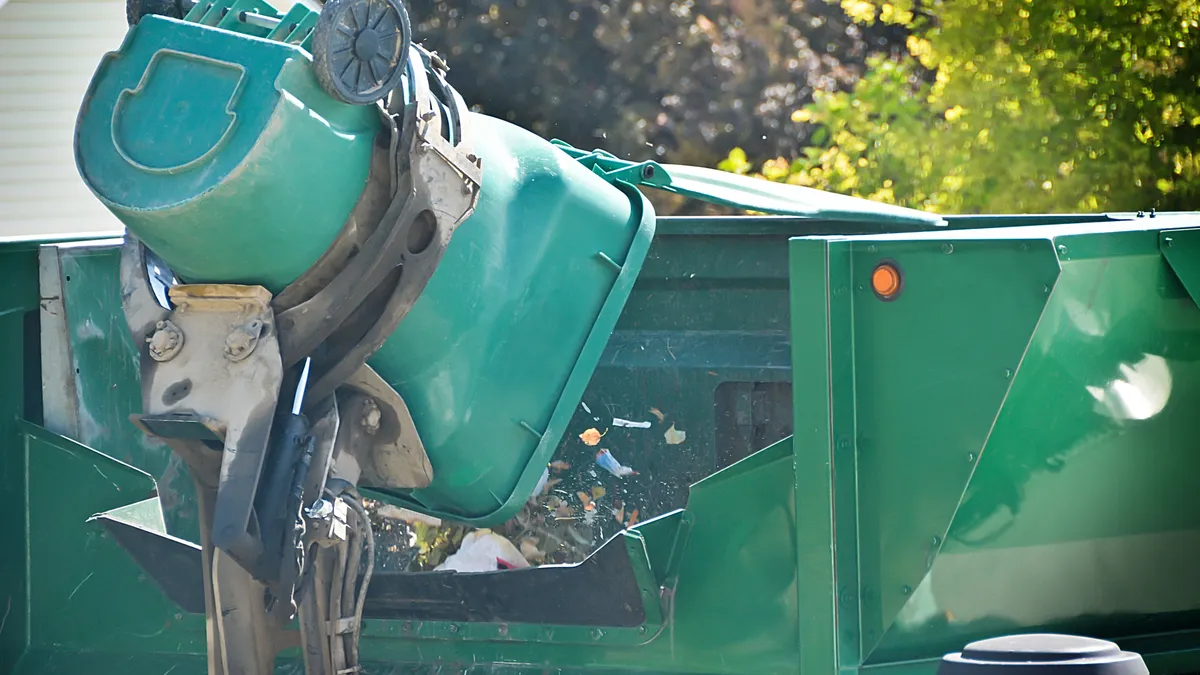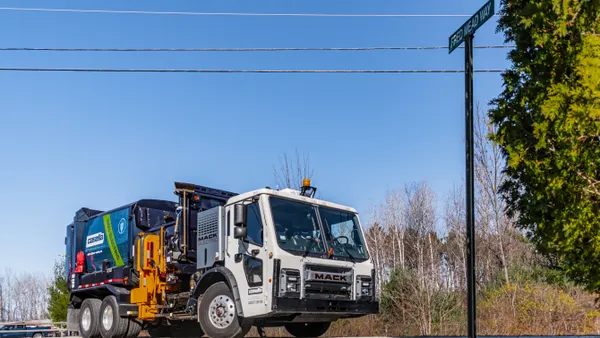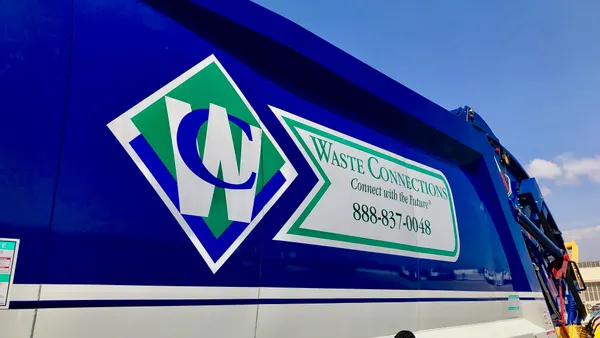Dive Brief:
- Solid waste worker fatalities in North America decreased by about 46% in 2021, according to new data from the Solid Waste Association of North America. The organization says the decrease is partly due to the industry’s heightened focus on overall health and safety since the start of the COVID-19 pandemic, though fatality numbers have fallen each year since 2018, according to SWANA data.
- There were 28 total waste worker deaths in 2021. Collection workers continue to have the deadliest job in the sector, making up about 80% of industry fatalities in 2021, SWANA reported. Collection vehicles were involved in many of these deaths, with workers often struck by their own vehicle or falling off of it.
- Third-party vehicles were another leading cause of death for collection workers. Vehicle-related deaths remain a top category of fatalities for both waste workers and members of the public involved in waste-related incidents. Deaths of members of the public totaled 90 people in 2021, up 18% from 76 deaths in 2020.
Dive Insight:
SWANA sees the “dramatic” drop in worker deaths as a welcome sign that companies and local governments are sustaining safety improvement efforts the industry put in place after fatalities reached significant levels in 2018. The industry similarly buckled down on safety as the pandemic began, said David Biderman, SWANA’s CEO and executive director.
The 28 total waste worker fatalities is down from 52 in 2020, 53 in 2019 and 59 in 2018, according to SWANA data. The numbers do not include coronavirus-related deaths.
Jesse Maxwell, SWANA's advocacy and safety senior manager who compiles the data on industry fatalities, said the organization collects the information differently than data from the U.S. Department of Labor’s Bureau of Labor Statistics. SWANA uses information from online research, news reports, solid waste companies and other resources throughout North America, which he says creates a more comprehensive picture of industry fatality factors. Data includes applicable companies in Canada, he added.
In recent years, the U.S. waste and recycling industry has experienced near-historic levels of M&A activity, which Biderman also suspects has played a role in lowering fatality rates. Smaller companies may not have the same level of funding or resources to invest in safety programs compared with larger companies with established programs and a strong safety culture, Biderman said.
Last year, 22 deaths happened during collection. According to the latest available data from the BLS, the rate of workplace fatalities among “refuse and recyclable material collectors” decreased in 2020, but the occupation remained the sixth deadliest in the United States for the second year in a row.
For post-collection workers, being struck by waste trucks or heavy equipment led to half of all fatalities, SWANA said.
Vehicle-related deaths remain a major concern for collection and non-collection workers alike, Biderman said. In 2021, seven total workers were struck by a waste vehicle, four total were involved in a single-vehicle crash, and three were struck by a vehicle other than their own. Another two workers were listed as dying in another type of collision. Distracted driving, medical issues and other factors may have contributed to some of these crashes, Maxwell said.
SWANA also tracks events in which a member of the public is killed in a solid waste-related incident. In 2021, 52 people died in a driver/passenger-related crash, up from 47 in 2020. Another 20 deaths were pedestrians, up from 13 in 2020. Motorcyclists, bike and scooter riders and homeless people were other third-party fatalities last year, SWANA said. Overall, 90 members of the public were killed in waste-related incidents, up from 76 in 2020.
SWANA’s vehicle-related fatality data reflects a “troubling” larger trend that’s not specific just to the waste industry, said Jane Terry, vice president of government affairs for the National Safety Council, which tracks factors that contribute to vehicle crashes. Overall vehicle-related fatalities in the United States increased by 9% in 2021, the NSC estimates. “Roadway deaths have been trending up at alarming rates overall since the pandemic,” she said.
Kirk Sander, vice president of safety and standards at the National Waste & Recycling Association, would not comment directly on SWANA’s data, saying he was not familiar with the organization’s methodology and thus could not compare SWANA’s information gathering directly with the job category codes the BLS uses to report industry fatalities. NWRA generally relies on BLS numbers for comparing fatality reports, he said.
SWANA plans to drill down further into this year’s data, especially on information about how seasonal changes could play a role in industry fatalities, Maxwell said. Data from the last few years shows fatalities tend to drop in May, then increase rapidly in June before tapering off throughout the rest of the year.
“One of our next steps is to look more closely at those June fatalities to see what we can find out,” he said. In the meantime, this seasonal information could help companies or municipalities plan safety training programs at more effective times of year, such as the late spring, he said.











